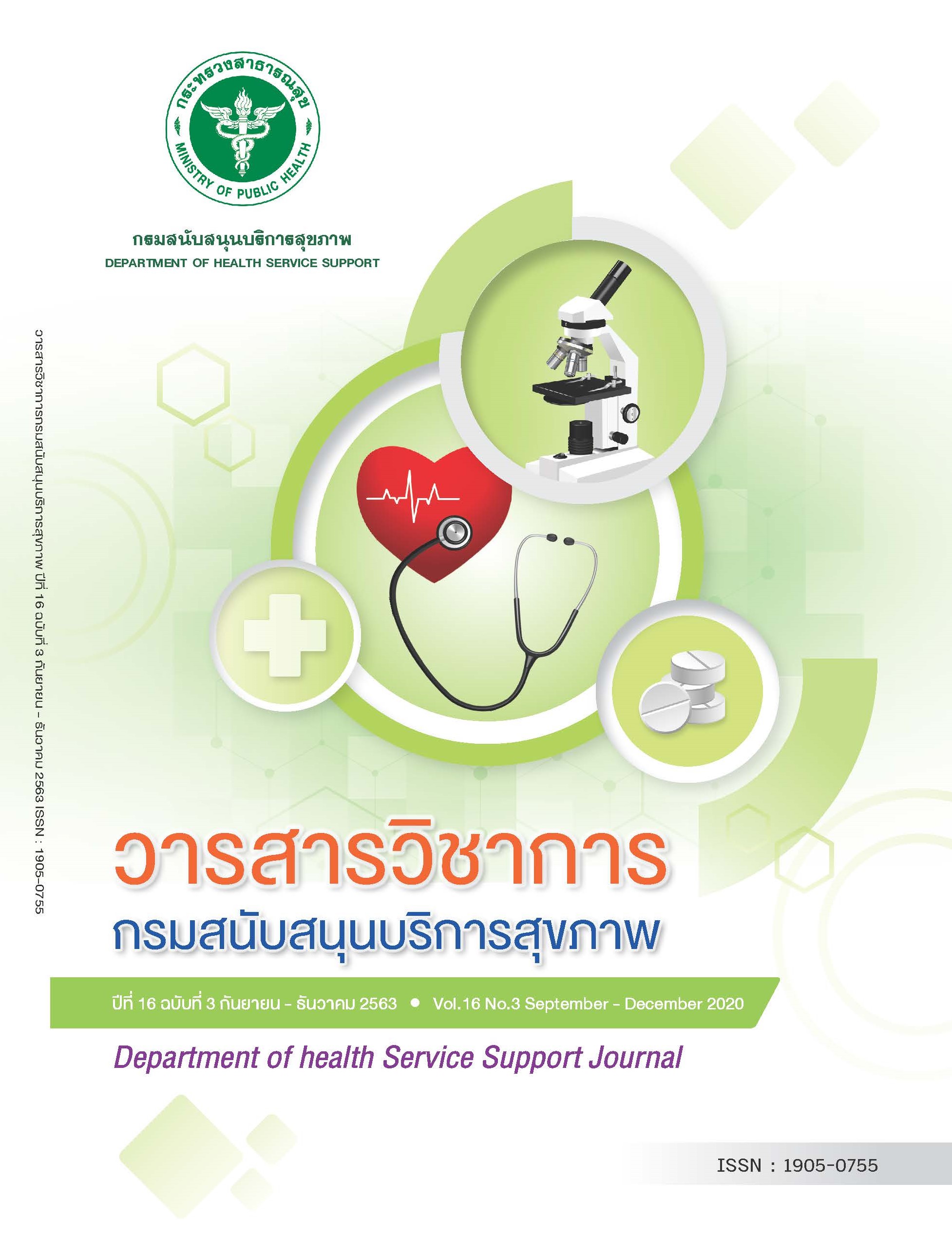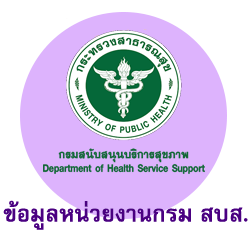การวิจัยทดลอง การใช้ชุดมาตรการลดบริโภคเค็มในชุมชนต้นแบบ
คำสำคัญ:
ชุดมาตรการลดบริโภคเค็ม, ปริมาณโซเดียมในปัสสาวะ 24 ชั่วโมง, ความดันโลหิตตัวบน, กลุ่มเสี่ยงโรคไตเรื้อรังบทคัดย่อ
การศึกษาวิจัยทดลองครั้งนี้มีวัตถุประสงค์เพื่อเปรียบเทียบความรู้ ทัศนคติ พฤติกรรมเกี่ยวกับการบริโภคอาหารที่มีปริมาณเกลือและโซเดียมสูง ความดันโลหิตและปริมาณโซเดียมในปัสสาวะหลังใช้ชุดมาตรการลดบริโภคเค็ม ได้แก่ กิจกรรมการให้ความรู้รายกลุ่มเพื่อการลดหวาน มัน เค็มอย่างเข้มข้น การปรับสูตรอาหารเพื่อลดการบริโภคเกลือและโซเดียมและการใช้ Salt Meter ระยะเวลา 2 เดือน ดำเนินการศึกษา เดือน กรกฎาคม ถึง สิงหาคม 2561 เลือกตัวอย่างแบบเจาะจง ที่ได้รับการคัดกรองเป็นกลุ่มเสี่ยงโรคไตเรื้อรัง ที่อาศัยอยู่ในพื้นที่เป้าหมาย 3 จังหวัด ได้แก่ ตำบลกุมภวาปี อำเภอกุมภวาปี จังหวัดอุดรธานี ตำบลคูบัว อำเภอเมือง จังหวัดราชบุรี และตำบลห้วยยอด อำเภอห้วยยอด จังหวัดตรัง จำนวน 209 คน เก็บข้อมูลโดยใช้แบบสอบถามความรู้ ทัศนคติ และพฤติกรรมการบริโภคอาหารที่มีเกลือและโซเดียมในปริมาณสูง รวมถึงการวัดความดันโลหิตและตรวจหาปริมาณโซเดียมในปัสสาวะ วิเคราะห์ข้อมูลโดยใช้สถิติ Paired sample T test
ผลการศึกษาพบว่า ค่าเฉลี่ยความรู้เกี่ยวกับการบริโภคอาหารที่มีเกลือและโซเดียมสูง ค่าเฉลี่ยความดันโลหิตตัวบนและค่าเฉลี่ยโซเดียมในปัสสาวะ 24 ชั่วโมง ระยะก่อนการศึกษาและระยะหลังแตกต่างกันอย่างมีนัยสำคัญทางสถิติที่ระดับ .05 ทั้ง 3 ตำบล หลังการติดตามต่อเนื่องใน 2 เดือนถัดไป พบว่า ค่าเฉลี่ยปริมาณโซเดียมในปัสสาวะ 24 ชั่วโมงระยะหลังการศึกษาและระยะติดตาม แตกต่างกันอย่างมีนัยสำคัญทางสถิติที่ระดับ .05 จำนวน 2 ตำบล
ชุดมาตรการดังกล่าว ทำให้กลุ่มตัวอย่างทั้ง 3 ตำบลมีความรู้เพิ่มขึ้น ระดับความดันโลหิตตัวบนและปริมาณโซเดียมในปัสสาวะลดลง แต่ไม่สามารถทำให้เกิดการเปลี่ยนแปลงของทัศนคติและพฤติกรรมได้ ดังนั้นควรเพิ่มระยะเวลาในการดำเนินงานและมาตรการหรือกิจกรรมที่จะกระตุ้นให้เกิดการเปลี่ยนแปลงพฤติกรรมอย่างต่อเนื่อง และควรทำควบคู่ไปกับการสร้างสิ่งแวดล้อมเพื่อลดการบริโภคเกลือและโซเดียม
เอกสารอ้างอิง
Aldo, L. et al. (2012). Lifestyle Education Program Strongly Increases Compliance to nonpharmacologic intervention in Hypertension patient: A2-Year Follow-Up Study. Journal of Clinical Hypertension. 14(11):767-772.
Bjoernsbo, K. et al. (2019). Salt Reduction Intervention in Families Investigating Metabolic, Behavioral and Health Effects of Targeted Intake Reductions: Study Protocol for a Four Months Three-Armed, Randomized, Controlled “Real-Life” Trial. International Journal of Environmental Research and Public Health.
Boonsiri, C. (2017). Effect of Program Food Consumpton for Sodium Reduction on Knowledge and Urinary Sodium in Nursing Student. Thai Journal of Nursing Council. 32(3): 104-119. (In Thai)
Burean of Non Communicable Disease. (2013).Report on the result of the reviwe. Preventing non-communicable disease in lifestyle by reducing salt intake. Bangkok: Printing Workshops. Veterans Affairs under the patronage.
Burean of Non Communicable Disease. (2016).Strategy to reduce salt and sodium consumption in Thailand 2016-2025.
Bangkok: Printing Workshops. Veterans Affairs under the patronage.
de Brito-Ashurst, I. et al. (2013). The role of salt intake and salt sensitivity in the management of hypertension in South Asian people with chronic kidney disease: a randomised controlled trial. Heart. 99:1256–1260.
Irwan, AM. et al. (2016). Development of the saltreduction and efficacy-maintenance program in Indonesia. Nursing and Health Sciences.18:519–532.
Nakano, M. et al. (2016). Effect of Intensive SaltRestriction Education on Clinic, Home, and Ambulatory Blood Pressure Lavels in Treated Hypertension Patients Druing a 3-Month Education Period. Journal of Clinical Hypertension. 18(5):385392
National Health Commission Office. (2016). 8 th National Health Assembly Resolution 2015. Nonthaburi: National Health Commission Office
National Health Commission Office: Thailand. (2014) 6 th National Health Assembly Resolution 2013. Nonthaburi: Siripattana.
Pillay, A. et al. (2017). Assessment of a Salt Reduction Intervention on Adult Population Salt Intake in Fiji. Nutrients. 9:1350.
World Health Organization. (2011). Global status report on noncommunicable diseases 2010. Geneva: World Health Organization.
World Health Organization. (2013). Global Action Plan for the Prevention and Control of Noncommunicable Diseases2013-2020.Geneva: World Health Organization.
World Health Organization. (2017). Best buys and other recommended interventions for the prevention and control of noncommunicable diseases. Geneva: World Health Organization.
ดาวน์โหลด
เผยแพร่แล้ว
วิธีการอ้างอิง
ฉบับ
บท
การอนุญาต

This work is licensed under a Creative Commons Attribution-NonCommercial-NoDerivatives 4.0 International License.



